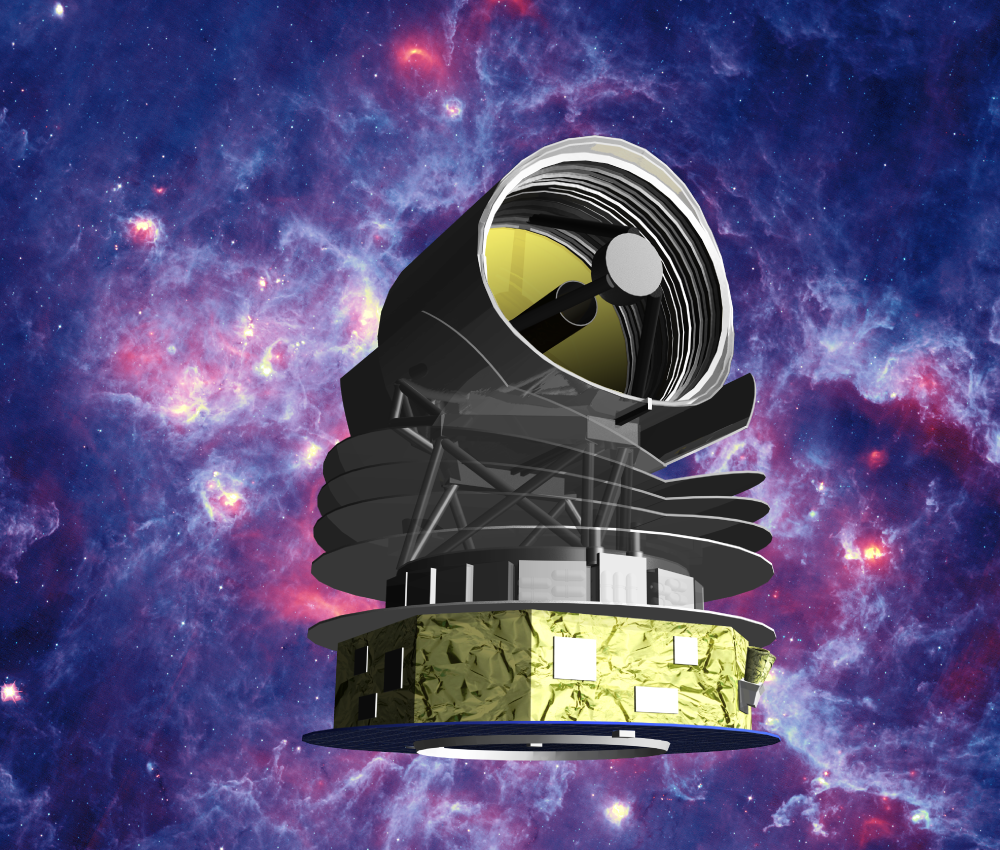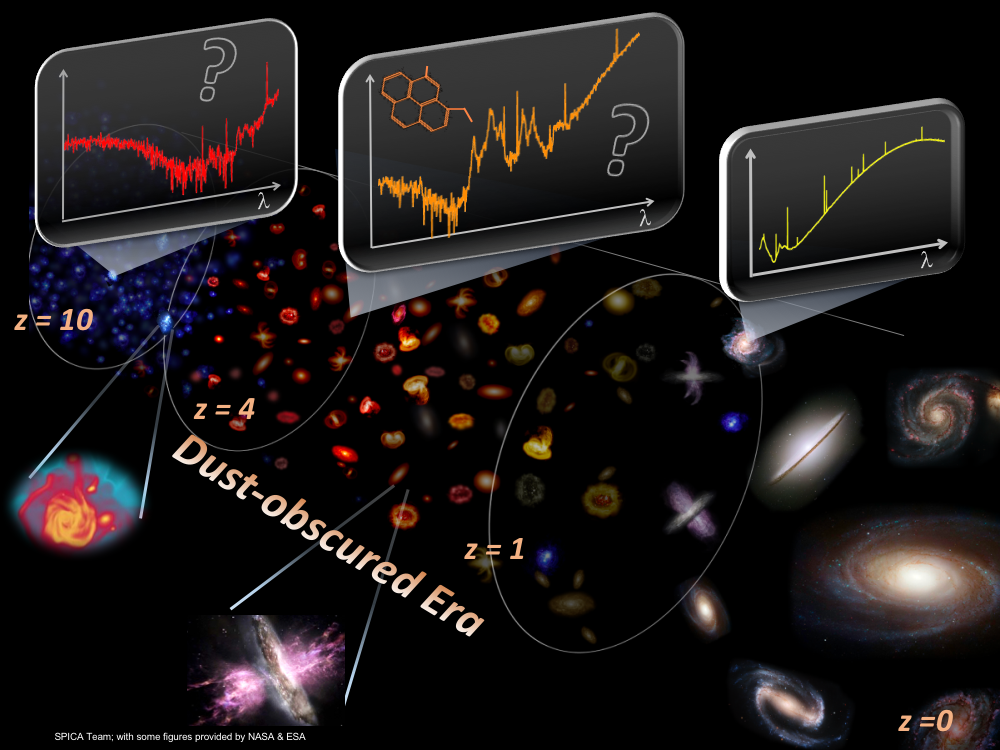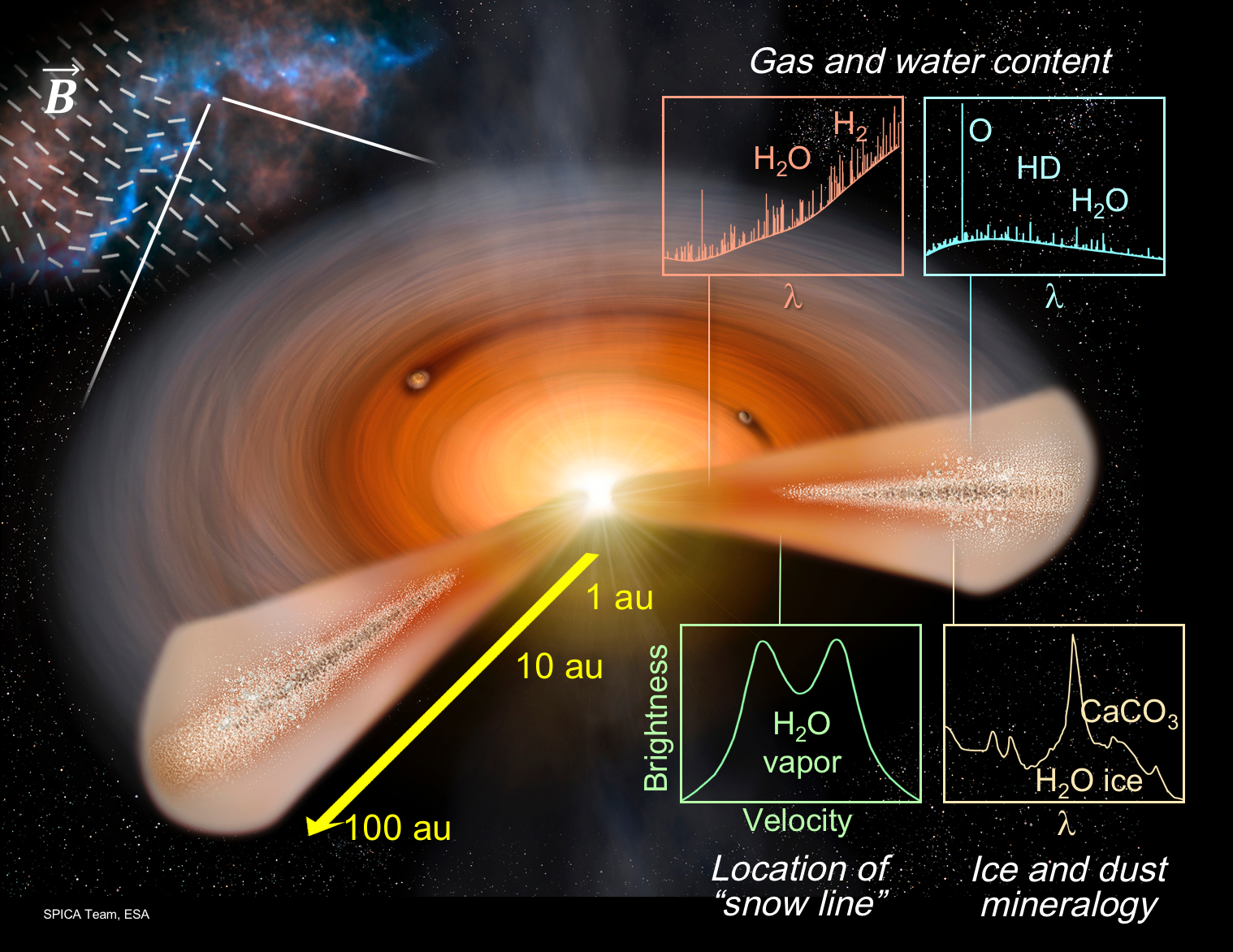The Next-Generation Infrared Astronomy Mission


Science Objectives of SPICA
Exploring the Universe with Infrared Eyes
Home > Science Objectives of SPICA
Revealing the Hidden History of the Universe
How was the universe born and how has it evolved ? How were the Earth and habitable living beings like us created ? To answer these questions is the ultimate objective of astronomy.
SPICA, a large-aperture (2.5 m) cryogenic space telescope, will tackle these questions through infrared studies of galaxy evolution and planet formation.

Fig. 1 A schematic view of SPICA
(Credit:JAXA / SPICA Team / Nagoya University)
Galaxy Evolution
How has the universe evolved to the present state rich in various materials?
The universe is thought to have begun after the Big Bang at 13.8 billion years ago, simply consisting of only the very light elements: hydrogen and helium. On the other hand, the present-day universe shows a considerable diversity, containing a lot of galaxies, stars, and planets, as well as gas and solid particles (dust grains) with various compositions, and now on the Earth, the life has emerged. The enrichment of the matter, through production and ejection of heavy elements by stars in galaxies, may play a significant role to form such a diverse world. However, previous observations mainly at visible light were unsuccessful to unveil the nature of galaxies in the critical era when the production of heavy elements were considered to be most active; the hearts of galaxies at those ages are often deeply embedded in surrounding dust grains.
SPICA enables us to probe such galaxies in infrared light, by looking through the surrounding dust, or even detect the emission from grains themselves. Owing to its unprecedented sensitivity, SPICA is the most powerful observatory to detect faint infrared light and to analyze the composition of dust and gas in detail. It will open up a new window toward an understanding of dust-obscured star-formation and supermassive black hole growth histories and when, where, and how the universe has been chemically enriched to produce such as abundant grains and organic materials.

Fig. 2 SPICA enables us to search for sold grains in the very early universe, and study properties of galaxies in the era of explosive star formation as well as nearby galaxies in the recent era through analyses of the infrared light from solid particles and gas. It will reveal how galaxies have formed and evolved in the history of universe.
(Credit:JAXA / Nagoya University)
Planetary Formation
When and how did our Earth and Solar system form?
Since the discovery of a planet around 51 Peg in 1995, thousands of planetary systems have been found for stars other than the Sun (extra-solar planetary systems). Now, researchers estimate that one star has at least one planet, meaning that planetary systems are quite common. Further, habitable planets, which may have environments suitable for life to emerge judging from the size and surface temperature, have also been discovered. However, some show properties quite different from those of the Solar system planets, and hence new questions have been brought up. Is our Solar system harboring life unique? If so, what is the origin? To address these big questions, it is important to understand the condition and mechanism of the birth of planetary systems.
SPICA will enable us to perform detailed study on the amount and composition of gas and sold grains which are building blocks of planets. Observations with SPICA for stars with various ages will eventually be a big step forward toward understanding how material in the universe is transformed to planets, and how planetary systems like our own form and evolve.

Fig. 3 SPICA will unveil the condition of star formation through observations of such as magnetic fields. It will further reveal detailed distribution and properties of gas, solid grains, and water/ice in protoplanetary disks surrounding new-born stars.
(Credit:JAXA / Nagoya University)